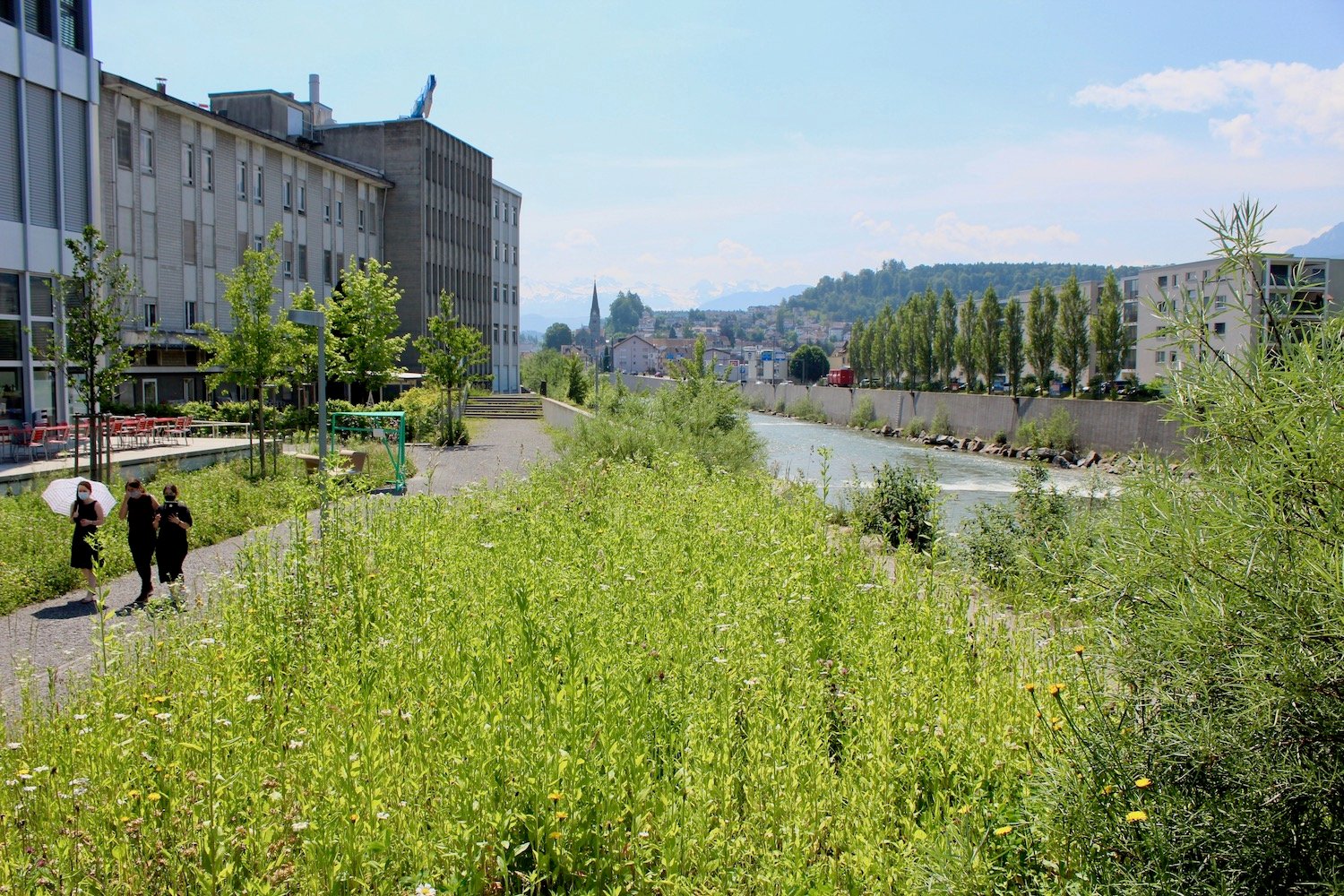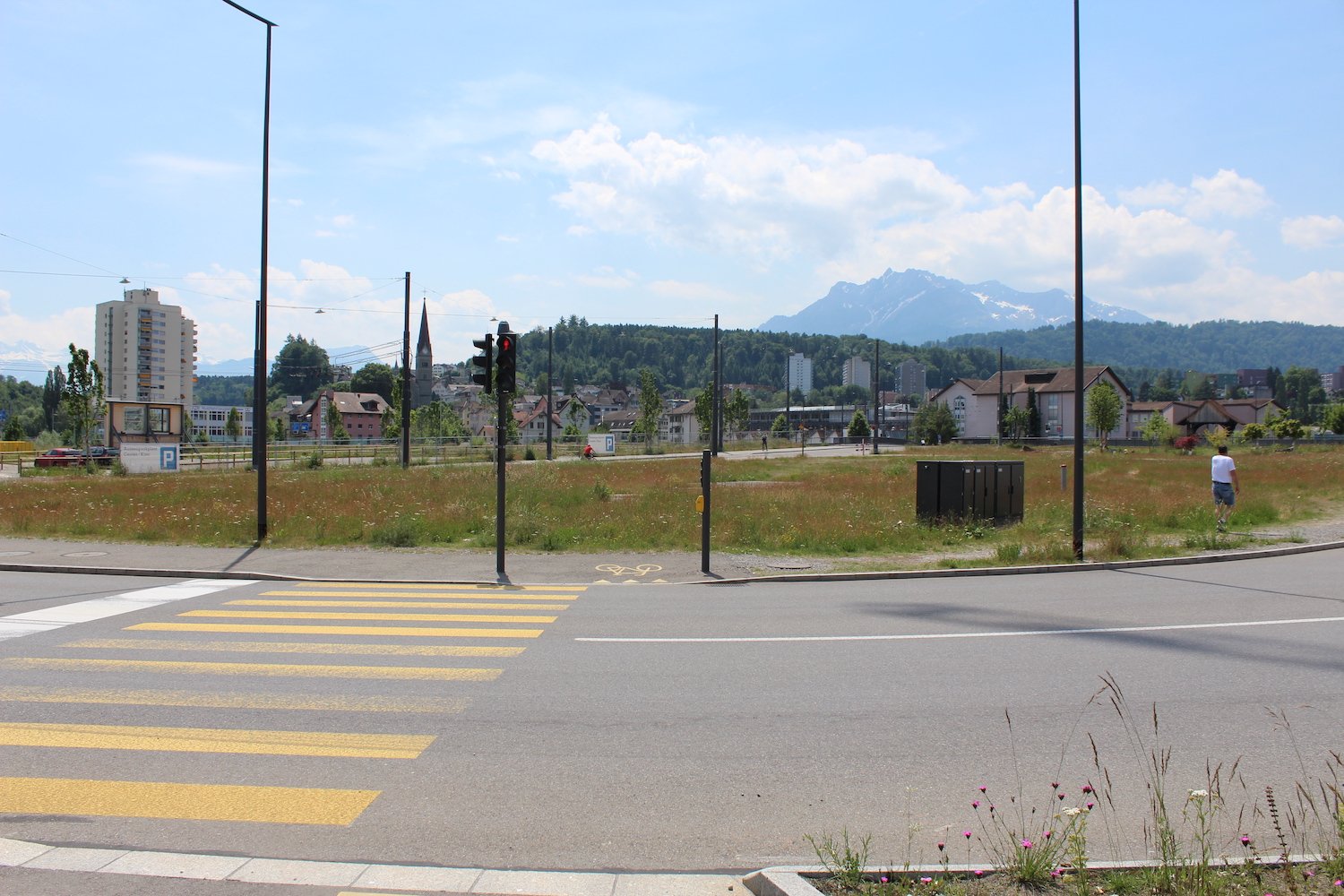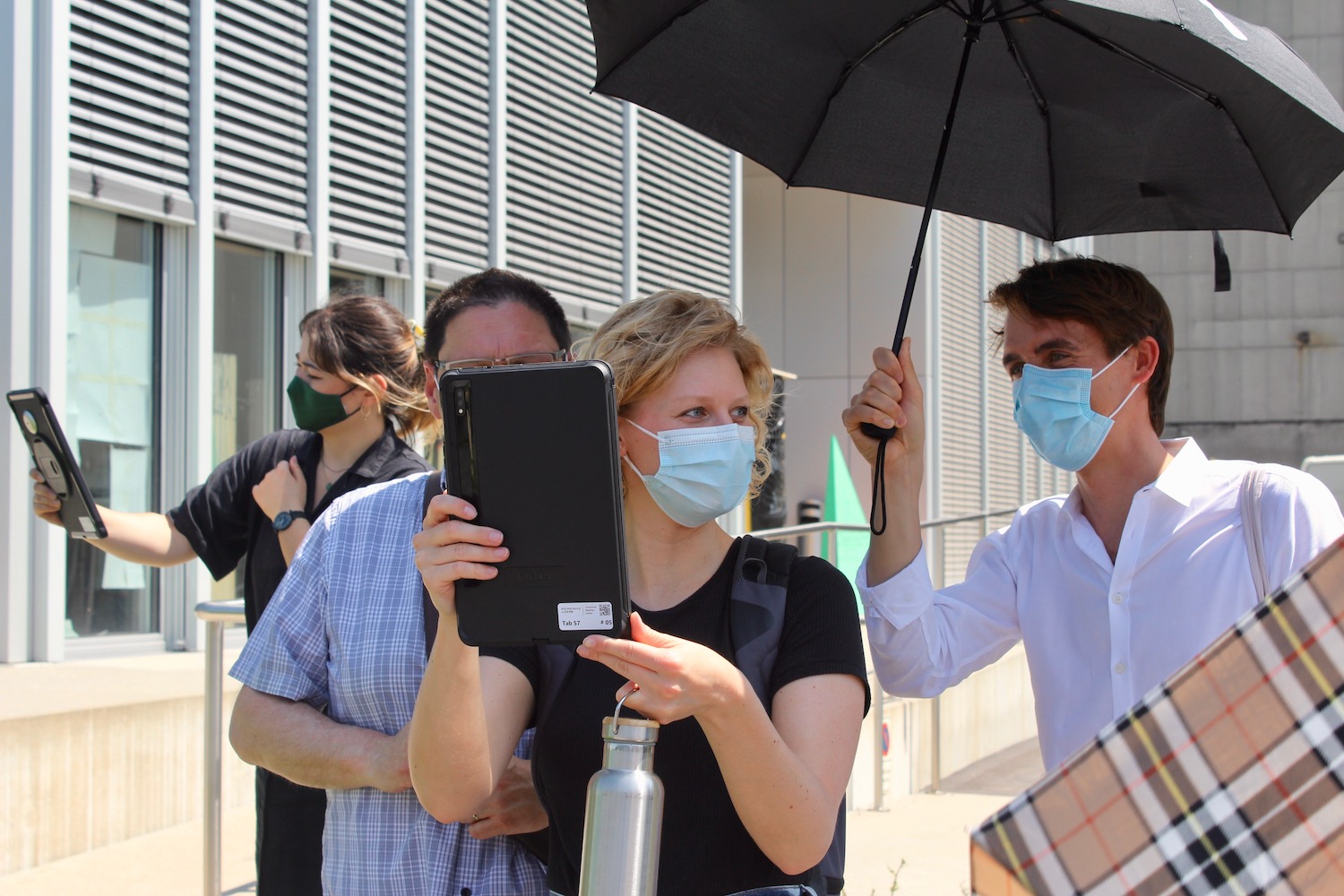When it comes to redesigning and developing individual areas or even entire districts, it is not uncommon for the population to begin with a certain amount of skepticism. It is therefore the task of those responsible in municipalities or spatial planning offices to win over those affected by their ideas.
And there is hardly any better way of doing this than if people can see with their own eyes what their immediate living space might one day look like. In other words: the mostly very complex and interwoven spatial development should be democratized.
People should actively help shape their city
Students at the Lucerne University of Applied Sciences and Arts – Design & Art have taken on this task. In an eight-week project with so-called “Augmented Reality” (AR), they developed ideas for the city park, which will be used in the future by the many people who will one day live here. Specifically, it is about the free space between the Lucerne University of Applied Sciences and Arts and the Kleine Emme. The municipality took over the area in 2020 in order to develop it according to their taste.
The highlight: People can walk through the area near the Kleine Emme with tablets, while various objects such as trees, benches or even a buvette or a stage appear on the screen. Some might be familiar with this from the Pokémon Go game that was popular a few years ago or from tourist attractions. The project was created in cooperation with the municipality of Emmen and the development agency LuzernPlus.
Project can be expanded
At the moment the same installations always appear on the screen. “After further development, it might be possible for people to choose from various suggestions and place the objects in the landscape according to their ideas,” explained project manager and lecturer Tobias Matter during the presentation of the students’ work.
He describes this as a “pioneering project from Central Switzerland”. To this end, the university is working with the CityScienceLab in Hamburg to develop new AR applications for spatial planning projects. “In the long term, this should result in an AR toolbox with which, on the one hand, the population can experience and evaluate proposals virtually and, on the other hand, use AR to develop and discuss their own ideas from their perspective on site using AR, on the other hand,” explained Matter. There is now great interest in such tools.
AR technology will also be used at Seetalplatz
The Emmenpark project is just the beginning. Because there are plans to create a new park or town square on Seetalplatz. According to Christoph Zurflüh, Area Manager Lucerne North, AR technology will also be used here if possible. “Today’s visualizations of buildings and landscapes are very good. But if you can put the objects directly in the room, that’s something else. Especially with a view to including the population. ”
The fact that the technology is currently being used in Emmen of all places is not only due to the fact that the university’s leading department is at home here. But also with the fact that Emmen should quickly develop into a smart city. «Smart City means thinking and acting in six dimensions with people at the center. This model has established itself throughout Switzerland, but also internationally, ”explains area manager Zurflüh.
“The Smart City approach can be explained well using the example of Emmenpark.”
Christoph Zurflüh, Area Manager Lucerne North
The six dimensions of urban development are mobility, life, economy, environment, governance (state, administration, community) and people. “The dimensions are networked with one another, coordinated with one another and aim in the same direction,” says Zurflüh. This is forward-looking insofar as work has so far been done in the individual dimensions and consequently the potential of areas has often not been fully exploited. The city of Lucerne is now also pursuing the smart city approach (Zentralplus reported).

Smart City: Emmen should play a pioneering role
“The Smart City approach can be explained well using the example of Emmenpark,” says Zurflüh. In the past, the planners would have designed a nice-looking park and the municipality would then have implemented parts of it within the budget. “The modern approach is now trying to network the topics mentioned right from the start, to involve people and use new technologies in the process,” says the area manager.
The questions arose as to whether the park would also make a contribution to the environment (dimension “environment”) and offer added value for the local people (dimension “life”). You also have to consider who will take care of life in the Emmenpark (dimension “people”) and which solution can be financed at all (dimension “governance”). “In addition, there is the involvement of the local people, for example in the presentation of the AR project,” says Zurflüh at the end.

–

